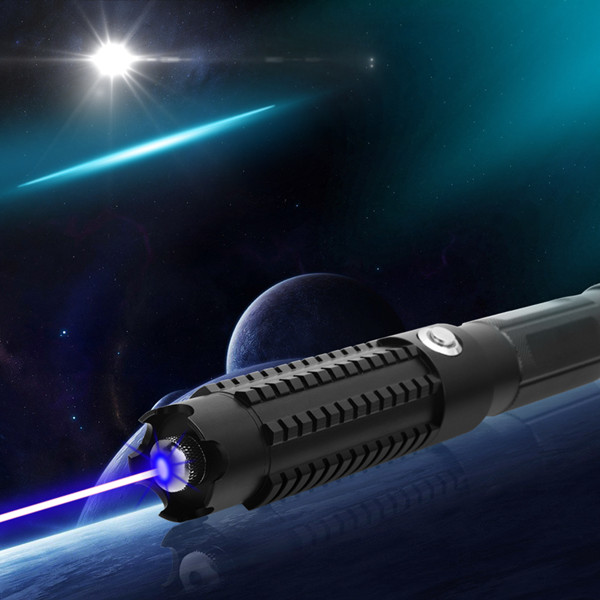The working medium of the astronomical laser pointer is divided into solid (such as lithium cesium triborate crystal) and gas (such as carbon dioxide). The green light is generally solid-state laser, and the main components are excitation source, condenser cavity, and resonant cavity mirror. The excitation source is mostly krypton arc lamp, iodine tungsten lamp or potassium rubidium lamp; the solid working medium is nonlinear crystal. Doping the metal ion with "stimulated emission" effect into the crystal can convert the light energy generated by the excitation source into a near-infrared laser of about 1000 nanometers, and then convert the frequency double into 532 nanometers, in this way, the emitted laser light becomes green. The Tyndall phenomenon formed by the laser pointer in the atmosphere is the phenomenon of light scattering in the colloid. If there is no atmosphere on the earth, and there are no other particles in the air, but a completely vacuum state, when the laser is shining into the sky, we will not see the beam of light at all, even the person holding the astronomical Green laser pointer. Because no light is scattered out, the observer does not receive light.

It can be seen that the choice of astronomical laser pointers mainly focuses on light color rather than power. In fact, high-power Laser pointer are relatively large, and their portability is relatively low. They are mainly used in complex environments with strong light interference (such as in the daytime or in a bright exhibition hall). It is meaningless to refer to stars. Yes, after all, there is no glare interference in the night sky. The laser pointer used in astronomical observations uses the characteristics of the laser to indicate that the laser has a green beam in the air. The main reason is that there are some small particles in the air, which produces the Tyndall effect, that is, the laser is scattered. We just saw the light path. Show the target in the night sky or make a more precise and rapid aiming on the target. The astronomical star pen is much better. After all, the laser beam is very thin. When the laser is scattered by impurities in the air, it can leave a bright light path. If you look at the night sky along the direction of the laser light path, the error will be much smaller.
